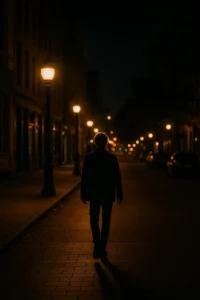Some streets are more than just routes—they are living symbols of culture, power, rebellion, and style. Throughout history, these iconic avenues and boulevards have witnessed revolutions, inspired art, shaped fashion, and attracted dreamers, tourists, and visionaries. Whether lined with luxury shops, historic buildings, or echoes of protest, these streets have stories carved into every corner. Here’s a journey through some of the world’s most famous streets and the rich histories that make them unforgettable.
1. Champs-Élysées – Paris, France
Often called “the world’s most beautiful avenue,” the Champs-Élysées stretches from the Arc de Triomphe to Place de la Concorde. Originally a swampy area, it was transformed in the 17th century into a grand promenade. It became a symbol of French elegance and revolution, hosting military parades, protests, and celebrations like Bastille Day. Today, it blends historic grandeur with luxury shopping, cinema, and café culture.
2. Broadway – New York City, USA
Broadway is one of the oldest north–south streets in New York, originally a Native American trail. But it became globally known as the heart of American theater. With its bright lights and iconic marquees in Times Square, Broadway represents dreams, drama, and cultural innovation. From Shakespeare to Hamilton, its stages have shaped the world of performance for more than a century.
3. Abbey Road – London, England
This otherwise quiet street in northwest London became iconic thanks to The Beatles’ 1969 album cover, showing the band crossing the zebra-striped crosswalk. Abbey Road Studios, located there, is one of the most famous recording studios in the world. The street remains a pilgrimage site for music lovers, with fans recreating the album cover daily.
4. La Rambla – Barcelona, Spain
La Rambla is a tree-lined pedestrian boulevard in the heart of Barcelona, stretching from Plaça de Catalunya to the Christopher Columbus Monument at Port Vell. Historically, it followed a dried riverbed and evolved into a cultural artery filled with theaters, markets, and street performers. Though crowded with tourists today, it still captures the spirit of Catalan life and urban vibrancy.
5. Lombard Street – San Francisco, USA
Often dubbed the “crookedest street in the world,” Lombard Street’s famous switchbacks were designed in the 1920s to reduce the hill’s steep incline. The red-brick road, framed by flowers and colorful homes, has become a quirky symbol of San Francisco. Its curves have made appearances in films, video games, and postcards worldwide.
6. Nevsky Prospect – St. Petersburg, Russia
Commissioned by Peter the Great, Nevsky Prospect is the main avenue of St. Petersburg and a historic showcase of imperial Russian architecture. It has witnessed tsarist parades, revolutionary marches, and literary inspiration—featured in the works of Dostoevsky and Gogol. Lined with cathedrals, theaters, and elegant façades, it reflects centuries of Russian culture and change.
7. Ginza – Tokyo, Japan
Ginza is Tokyo’s high-end shopping and entertainment district, known for its neon lights, luxury boutiques, and avant-garde architecture. But its name dates back to the Edo period, when a silver coin mint (ginza) was established there. Over time, it evolved into a symbol of modernity and Japanese sophistication, often compared to Fifth Avenue or the Champs-Élysées.
8. Bourbon Street – New Orleans, USA
Bourbon Street is synonymous with music, nightlife, and Mardi Gras celebrations. Located in the French Quarter, it reflects the city’s Creole roots and cultural fusion. Despite its party reputation, Bourbon Street also has historical depth, with colonial architecture and jazz clubs that echo the birth of American music traditions.
9. Via Dolorosa – Jerusalem, Israel
Meaning “Way of Suffering,” the Via Dolorosa is believed to be the path that Jesus walked on the way to his crucifixion. Located in the Old City of Jerusalem, it’s one of the most sacred pilgrimage routes in Christianity. Each station along the street marks a moment of spiritual and historical significance, attracting visitors from around the world.
10. Orchard Road – Singapore
Originally named for the nutmeg orchards that lined the area in the 19th century, Orchard Road is now Asia’s most famous shopping boulevard. What began as a quiet road through plantations transformed into a vibrant commercial district. Today, it represents Singapore’s rapid rise as a global city and is lined with malls, hotels, and luxury brands.
Conclusion: Streets That Tell Stories
These famous streets are more than locations—they’re symbols of the cities and cultures they belong to. They’ve witnessed revolutions, inspired creativity, and connected generations. From cobblestones to asphalt, from ancient routes to modern avenues, each one is a chapter in the story of human movement, memory, and identity. Walking these streets is like walking through history itself.







